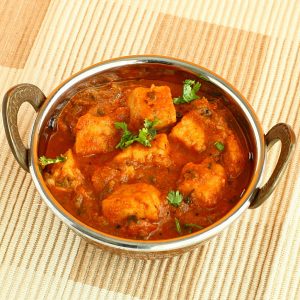This website uses cookies so that we can provide you with the best user experience possible. Cookie information is stored in your browser and performs functions such as recognising you when you return to our website and helping our team to understand which sections of the website you find most interesting and useful.

Susan E. Mazer, Ph.D. Blog
Thoughts and ideas on healthcare
Hi, and welcome to my blog! I'm Susan E. Mazer -- a knowledge expert and thought leader on how the environment of care impacts the patient experience. Topics I write about include safety, satisfaction, hospital noise, nursing, care at the bedside, and much more.
HCAHPS Scores and Curry
August 16, 2013
 In Indian cooking, curry is a generic word for “stew” — many spices put together in mysterious ways that result in a taste that is a combination of sweet and hot.
In Indian cooking, curry is a generic word for “stew” — many spices put together in mysterious ways that result in a taste that is a combination of sweet and hot.
The relationship I see between HCAHPS scores and curry is that the questions are the spices and the outcomes are as mysterious as the final taste of a fine curry.
Those of us who love Indian cuisine know that every curry — even with the same name — has a unique taste. And, every patient experiences is unique in ways we only wish we could understand.
The HCAHPS questions are somewhat simplistic. They are storefronts for events that only patients experience and tell a story that is much more complex than the questions.
For example, the questions on pain are twofold: was the pain well managed (whatever that means) and was “everything possible” done to mitigate discomfort? These two questions could not be more misleading.
What does everything possible mean? When a hospital patient is in pain that cannot neither be avoided or fully resolved, what can be reasonably expected in terms of relief? Everything possible?
During my own hospitalization last month, the pain was unresolvable. Meds were provided every 8 hours, but my pain never followed that schedule. In fact, even when I complained about it and then nurse called the doctor, the change to every 6 hours was insufficient to deal with my very in-the-moment suffering.
It would have been easier if I was on a morphine drip, but it was not that kind of pain. It was that gray area when pain and suffering are indistinguishable.
The room I was in was small and private. It had one wooden chair for my husband to sit by me 12 hours a day. The television was agitating when it was on — it was useless to me. And, trust me, I love watching mindless television, giving my brain much needed respite from all that I am demanding of it. But this time, I couldn’t watch anything.
I have said this before but I’m saying it again: the environment in which patients are confined 24 hours a day is the primary caregiver; it is in the “everything possible” column of what to do.
I was trapped in my hospital room. The bed was a mess, bathroom too complex to get to, the window too high and glaring, the overhead light was harsh, and the sounds I heard varied from erratic to nothing. “Nothing” is a sound: it is the chatter in my head that wonders if I will ever recover, that focuses on how awful I feel, that reminds me that I am alone with this misery.
We have been asked so many times if there is a relationship between HCAHPS scores and the the C.A.R.E. Channel. There definitely is, and you can read more about it the newest whitepaper published by Healing HealthCare Systems.
In the paper, I suggest that HCAHPS magic is in the human factors of delivering care — in the ways in which one person can offer compassion and empathy to another to just hold his/her burden for a little while. The magic is in making the clock mover faster on an experiential level if not on a real-time level. The magic is in taking care of the physiology of pain while fully addressing the spiritual and mental anguish that comes with it.
As a patient, time and place — how long and where you are — is a quality as well as a reality. And, curry is not curry if it has no taste. The environment must have the “spice of life” to support a life worth living.










